- Home
- Tom Clancy
Armored Cav: A Guided Tour of an Armored Cavalry Regiment Page 8
Armored Cav: A Guided Tour of an Armored Cavalry Regiment Read online
Page 8
The original M2/3 specification required armor capable of standing up to heavy machine-gun (.50-caliber/12.7mm) fire and fragments from artillery and mortar shells. But with the increasing use of heavier automatic cannons and man-portable anti-tank weapons, the armor on the newest Bradleys has been upgraded to survive hits from heavy 30mm cannons (like the GAU-8 on the A-10A “Warthog”) and light anti-tank weapons like the Soviet RPG-7. The -A2 versions of the Bradley carry distinctive plates of add-on armor, plus deeper side skirts to protect the tracks and lower hull. Still, I must emphasize again that a BFV was never designed to stand up to heavy tank-gun or missile fire. The M2/3 was meant to work in a combined-arms team with the M 1 Abrams, and not to fight enemy tanks by itself. (When this happened during the 1991 Gulf War, the Bradleys suffered in the process, but they gave as much punishment as they took.)
The view through the rear ramp hatch of a Bradley fighting vehicle. The fold-down seats are evident, as well as the turret “basket” in the front of the vehicle.
JOHN D. GRESHAM
Like its heavy cousin, the M1, the Bradley has survivability features designed to save lives if something nasty penetrates the crew compartment or turret. To begin with, the M2/3 is equipped with a fire-suppression system that will snuff a catastrophic fire in the event of a fuel or ammunition hit. In addition, all of the M2A2s and M3A2s are equipped with spall liners to help keep fragments from injuring the crew if a projectile penetrates the hull armor. Unless a Bradley crew member is right in the path of a tank round or missile-warhead jet, he will usually survive. And if you are an enemy commander who sees a unit composed of M1s and Bradleys, you are going to shoot at the tanks first, since they are the greatest threat to your existence. This simple lesson from the Gulf War of 1991 has convinced the Army to attach M1s directly to cavalry squadrons in the heavy armored and mechanized divisions.
If you walk up to a Bradley, you enter the rear compartment where the “precious cargo” of personnel and ammunition is stored. You enter through an opening equipped with a heavy hydraulically powered ramp door. In the M2 versions of the Bradley, there are seats for six infantrymen and their weapons, plus stowage space for ammunition. The entire stowage layout of the IFV Bradley has recently been improved, with the 25mm ammunition stored under the floor-boards and five TOW missiles in vertical racks. There are also firing ports and vision blocks for specially shortened versions of the M16 assault rifle—these have rarely been used in combat. The original IFV concept of infantrymen fighting from inside an armored vehicle just never has taken hold in the armies of the world. The simple truth is that in the end, soldiers have to get out in the open to use their individual weapons effectively. And all the smart bombs and guided missiles will never change that! The old grand master of science fiction, Robert Heinlein, was right. Someday, there will be starship troopers! The M3 cavalry/scout version of the Bradley is similar to the M2, except that four of the seats have been deleted to make room for more TOW rounds and the specialized radio gear used by the two dismount scouts that ride in the back.
As you move forward in the Bradley, you come to the turret basket. Inside the turret are seats and hatches for the vehicle commander (on the right) and the gunner (on the left). Both positions are surprisingly comfortable, even for folks over six feet. Much like the M1, there is a thermal sight boresighted to the gun tube, although the image appears on a red background instead of the more common green found on the M1. One quickly finds out that the most important thing in the entire turret is a socket wrench (the crews prefer a Sears Craftsman model, they tell us) used to manually operate the machine gun and cannon feeds during reloading. This may seem rather crude for an armored vehicle costing over a million dollars a copy, but it is simple, it works, and it allows the ammo feeds to be kept compact (unlike, for example, the bulky and complex linear linkless feed system on the AH-64 Apache helicopter). The Bradley’s gun is stabilized, and firing on the move requires very little correction. The cannon, machine gun, and TOW-2 missiles can be fired from either seat. Firing the weapons is not much more difficult than playing a video game. For the guns, it is simply a matter of selecting what kind of weapon and ammunition you want, using your hand grips to put the crosshairs on the target, and pressing the thumb trigger. Seventy-five rounds of 25mm armor-piercing ammunition and 225 rounds of high-explosive 25mm ammunition are usually loaded and ready to fire; two TOW-2 rounds and 800 rounds of 7.62mm machine-gun ammunition are ready-loaded as well.
A cutaway of a TOW-2A wire-guided anti-tank missile.
JACK RYAN ENTERPRISES, LTD., BY LAURA ALPHER
A cutaway of a TOW-2B wire-guided anti-tank missile. The two downward-firing warheads are located at the front of the missile.
JACK RYAN ENTERPRISES, LTD., BY LAURA ALPHER
The TOW missile is the primary anti-armor weapon of the Bradley, and it has a long and fascinating history. In 1958 the Army began to investigate the idea of a Tube-launched, Optically tracked, Wire-guided anti-tank missile; hence the acronym TOW. By 1963, Hughes had built a successful prototype, and the first production missiles were delivered to the Army in 1969. The first TOW was fired in combat by a UH-1 helicopter on May 22nd, 1972, knocking out a North Vietnamese T-54 tank at a range of 900 meters. Subsequent combat involving TOW provided evidence that it was an immediate classic. Tube-launching reduces the back-blast problem of earlier anti-tank weapons, for a small charge expels the missile from the tube. When ejected, the guidance fins pop out, and the rocket motor ignites at a safe distance from the launcher and its operator. Wire guidance means that the missile is under the gunner’s control from just after firing until target impact, or until the wire runs out. On the TOW-2, there is a xenon beacon lamp in the tail of the missile, very bright in the infrared part of the spectrum, which makes it easy to track—even at night through fog, snow, or sandstorms, when the optional TAS-4 thermal sight is attached. All of this means that if the gunner keeps the optical tracker’s crosshairs on the target, the missile will hit. System reliability in combat has been over 95%, which is amazing by any standard.
Mounted on a simple tripod, a complete TOW-2 system weighs 280 lb/127.3 kg and can be carried by a three-man crew. The minimum range of TOW is 65 meters, with a maximum range of 2.3 miles/3.75 kilometers (the length of the wire). The missile is subsonic: 623 knots/1,000 kph at peak velocity, which drops off rapidly after rocket-motor burnout. This happens shortly after launching, and then the missile just coasts along, with the TOW taking about fifteen to twenty seconds to reach maximum range. A twin TOW launcher is mounted on the Bradley Fighting Vehicle; and a single launcher can be fitted to a HMMWV, or almost any light wheeled or tracked vehicle. It is also used on the AH-1 Cobra and many other helicopters worldwide.
There have been five versions of the TOW, each with increasingly powerful warheads. Total TOW production is well over 500,000 units to date, with additional units still being produced as of early 1994. TOW is considered a “wooden round,” and stays “fresh” in the canister, with a shelf life of up to twenty years in storage. All versions are compatible, as long as the launch-control unit has the correct software updates. The current version is the TOW-2B, which was developed to defeat the latest composite and explosive-reactive armor systems and is programmed to fly directly over the target, where a sophisticated sensor triggers two downward-firing warheads. These warheads have dense metallic liners that become “explosively forged projectiles” to penetrate the target’s thin roof armor.
In 1993, the Army awarded Hughes a contract to produce 18,800 TOW- 2A and TOW-2B missiles. This works out to a unit cost of about $9,800—a bargain price to kill a $250,000-dollar Soviet-type tank. To fire a TOW-2 missile the gunner simply keeps the crosshairs of the sight on the target, and the missile flies right into it. All you have to do is erect the two-round launcher (it can be reloaded from a hatch in the rear compartment roof), fire, and track the target in the sight. Despite fears that the new reactive applique armor on some tanks might defeat the TOW-2�
�s warhead, experience in the Gulf War proved this to be false. TOW-2 can defeat any tank on the battlefield, with the possible exception of an M1 Abrams or a British Challenger II! The major limitation on use of the TOW system is that the Bradley has to be stopped to fire it.
The Bradley’s guns are also easy to use. Although there is no laser rangefinder, range estimation is quite simple. You just punch in an estimated range on the weapons-control panel (there is a reticule in the sight to help you). Crews are trained to estimate range by judging the apparent height of the target in the gunsight—the closer the target the bigger it appears. Then you put the “death dot” of the sight onto the target and squeeze off a few ranging shots. Once you see the target bracketed, all you have to do is fire as many rounds as you need. The target quickly becomes obscured with dust and smoke from hits and near misses, and probably has also been destroyed as well. At 300 rounds per minute, it feels like you are shooting at the target with a fire hose! But gunners are trained to conserve ammunition by firing single shots until they see a hit on the target; then they fire three-round bursts until the target is destroyed.
Like the M1, the Bradley has a pair of the new SINCGARS radios for communications, though the current -A2 versions do not yet have access to the IVIS system. There is, however, a program under consideration for equipping the M2A2 and M3A2 with a downgraded IVIS terminal and GPS, but budget constraints may slow this process down until the new -A3 versions of the Bradley come on-line late in the decade.
If you exit the turret basket and head forward on the left side of the vehicle, you come to the driver’s position and hatch. This is a very comfortable seat with a friendly instrument console. The Bradley is powered by a 600-horsepower turbocharged diesel engine with an automatic transmission. To start the vehicle no keys are required. You just pull a knob on the dashboard to activate the fuel pump, then push the shifter knob to the START position. The engine catches quickly and warms up smoothly. All that is then required is to shift down to the DRIVE position with the selector and press the accelerator. The vehicle accelerates quickly, and before you even know it, you are doing over 30 mph/48 kph. The Bradley has a top speed of over 45 mph/65 kph, and has no trouble keeping up with the M1 Abrams, either on-road or cross-country. The only trick to driving the -A2 version of the Bradley, which has an aircraft-style control wheel, is that it tends to be a bit loose in the rear during turns. However, you quickly get used to that; and after a while, driving the beast becomes a joy.
One chore that takes some time is setting up the Bradley for swimming. Because of all the rivers in Europe and Korea (where the Army expected to fight during the Cold War), the Bradley was designed to swim like its older cousin, the M113. But because of the extra weight of the turret and armor, the M2/3 requires a bit of additional buoyancy. To make this possible there is an erectable “swim curtain” of rubberized fabric over a steel frame to keep the upper deck free of water; and it works just fine.
In conclusion, the Bradley may not be the ultimate armored fighting vehicle, but it is a mature weapon system that is still evolving to keep pace with rapid changes in key technologies. Maybe not as sexy as an Abrams tank, but just as vital and necessary.
The M113 Armored Personnel Carrier
The M113 armored personnel carrier (APC) was the first modern “battle taxi” for infantry to use on the battlefield. It was designed to take advantage of technology breakthroughs of the 1950s in casting and welding aircraft-quality aluminum to create structures with the same strength as much heavier steel construction. This light weight allowed the FMC designers to use a relatively small automotive engine to drive a tracked vehicle with a substantial payload and the ability to float and swim across lakes, rivers, and streams. Even today when you look at one of the early-production M113s, they still have a clean, almost modern look. It is almost as if Frank Lloyd Wright took a shoe box and made it into a perfect shape to transport what the U.S. Army calls its “most precious cargo,” the infantry.
Over the years, FMC and its licensees have produced something over 85,000 M113s for use by over two dozen countries (the Israelis call their M113s “Zeldas”). And while this venerable vehicle is no longer in production at FMC’s San Jose, California, factory, it continues to be produced in places such as Turkey and Italy. Over 32,000 remain in service with the U.S. Army.
The basic model is the infantry squad carrier. This version of the M113 can carry a full squad of infantry (between ten and twelve soldiers), along with all of their weapons. It should be noted that this is a full squad, not the reduced unit carried by most IFVs like the M2 Bradley (which can carry only six dismount soldiers) or the BMP. It can also mount a machine gun (typically an M2 .50-caliber) or automatic grenade launcher (such as the 40mm Mk 19) on a rotatable mounting (“pintle”) at the commander’s hatch. To fire this external weapon, the commander has to open the hatch and stand on his seat. The troops sit in the back on bench seats with stowage for weapons and ammunition under the seats and on the sidewalls. They enter and exit the vehicle through a rear door equipped with a hydraulically powered ramp for easy access. The driver and gunner (if carried) sit in the front near the engine and transmission. Recently, FMC has begun shipping kits to improve the survivability of the M113 by installing interior spall liners, additional external armor, an upgraded engine and transmission, and external fuel tanks to reduce the risk of internal fires. Known as the M113A3, the conversion kit is being installed on existing M113s at several Army depots. These will be used by Army Reserve and National Guard units, and they will also be assigned for ambulance and support duties in active units. The M113A3 is a first-rate APC with many years of life ahead. It is cheap, rugged, and versatile. Not bad for a vehicle that was designed about the time I was a child.
While FMC and its licensees built tens of thousands of the basic squad carriers, they also built thousands of other M113 variants. The most important of these is the M577 command vehicle, which is used as a mobile command post by U.S. armored units. The M577 is essentially an M113 chassis with a raised roof and sides and additional generators to power the numerous radios that are stored in racks inside the rear compartment. The exact combination of radios depends on just what kind of command post it is (company, battalion, regiment, etc.) and whether it is stationed in a rear area or up front. It is additionally equipped with an expandable shelter tent in the rear of the vehicle to provide room for tables and map boards.
A 3rd ACR M 113 configured as a fire-support team vehicle (FIST-V).
JOHN D. GRESHSAM
It should be said that this venerable vehicle does have shortcomings, the most glaring being the inability of the M577 to operate effectively while on the move. Because it must be stationary for the onboard radio systems to operate, it becomes vulnerable to enemy artillery fire directed by radio direction-finding (DF) units. To help overcome this shortcoming, FMC is delivering kits to upgrade the M577 fleet to a configuration known as M577A3. This adds new radios and command and control displays, and provides some limited capability to operate on the move. As such, it will provide an interim C3 (command, control, and communication) capability until the introduction of the new XM4 C3 vehicle.
A more lethal version of the M113 is the M901. This model combines an M113 chassis with an erectable two-round launcher and sight (called a “hammerhead”) for the TOW anti-tank missile. Designed to provide some antitank muscle to infantry units equipped with M 113s, it represents a compromise between mobility and firepower (having TOW missiles only). A similar vehicle (called an M981 FIST-V), with a laser target designator in place of the missile launcher, is used by fire-support teams, though the Army is also starting to use M2/3s for FIST teams as well.
The versions of the M113 most likely to be found in armored units are the M106 and M125 mortar carriers. The M106 carries an 81mm mortar, while the M125 carries the more powerful 106mm mortar; otherwise the vehicles are identical. The mortars are mounted on a rotating base plate (much like a “lazy Susan”) to fire throu
gh a large circular hatch in the roof. There is stowage for mortar rounds and radios for the various radio unit networks (nicknamed “nets”). The M106 is the most common version, with a pair of these usually assigned to each armored and mechanized company and cavalry troop. Their primary mission is to provide direct smoke and fire support, so that the captains and lieutenants who command small units can have their own artillery on call.
The M 113 is an old soldier in comparison with the vehicles that replaced it. Around the world, various military forces have replaced the old aluminum box with such wonderful vehicles as the Bradley, the Warrior, and the BMP. But it should be remembered that no military force, including that of the U.S., can afford to base its entire armored force on expensive vehicle chassis like the Abrams and the Bradley. And so the M113 provides a good, simple base for a number of different applications; it is more than adequate for these jobs. There is an old saying, attributed to the former chief of the Soviet Navy Admiral Gorshkov: “Perfect is the enemy of good enough.” For a good many of the jobs that the U.S. Army will have in the 21st century, the M113 will be more than good enough.

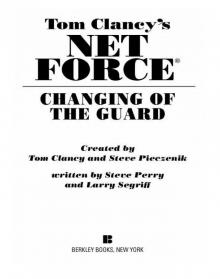 Changing of the Guard
Changing of the Guard Clear and Present Danger
Clear and Present Danger Hounds of Rome
Hounds of Rome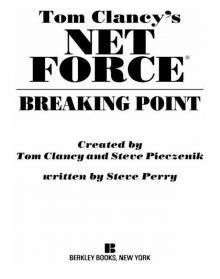 Breaking Point
Breaking Point Tom Clancy's Jack Ryan Books 7-12
Tom Clancy's Jack Ryan Books 7-12 Full Force and Effect
Full Force and Effect The Archimedes Effect
The Archimedes Effect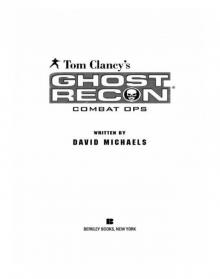 Combat Ops
Combat Ops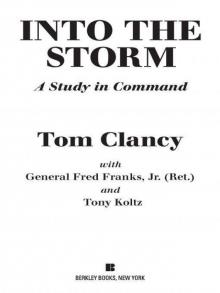 Into the Storm: On the Ground in Iraq
Into the Storm: On the Ground in Iraq Under Fire
Under Fire Point of Impact
Point of Impact Red Rabbit
Red Rabbit Rainbow Six
Rainbow Six The Hunt for Red October
The Hunt for Red October The Teeth of the Tiger
The Teeth of the Tiger Conviction (2009)
Conviction (2009)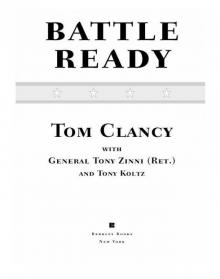 Battle Ready
Battle Ready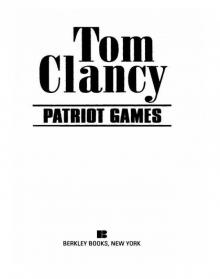 Patriot Games
Patriot Games The Sum of All Fears
The Sum of All Fears Fallout (2007)
Fallout (2007) Red Storm Rising
Red Storm Rising The Cardinal of the Kremlin
The Cardinal of the Kremlin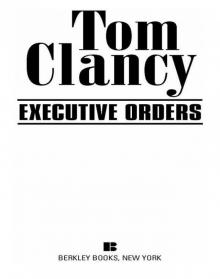 Executive Orders
Executive Orders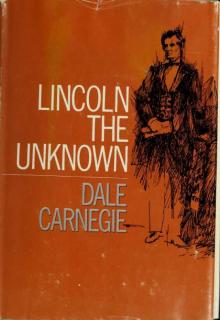 Lincoln, the unknown
Lincoln, the unknown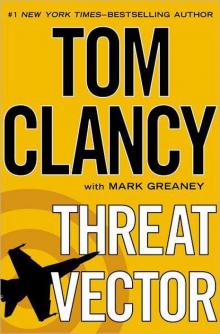 Threat Vector
Threat Vector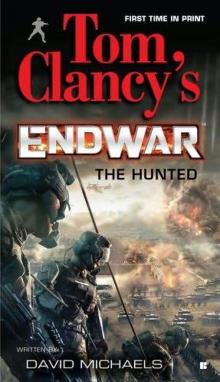 The Hunted
The Hunted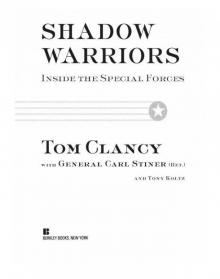 Shadow Warriors: Inside the Special Forces
Shadow Warriors: Inside the Special Forces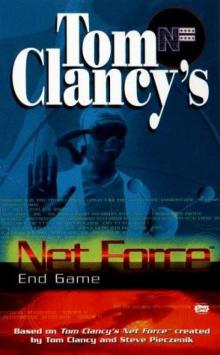 End Game
End Game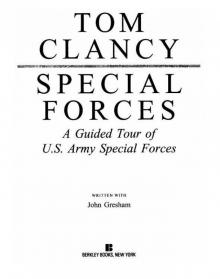 Special Forces: A Guided Tour of U.S. Army Special Forces
Special Forces: A Guided Tour of U.S. Army Special Forces Locked On
Locked On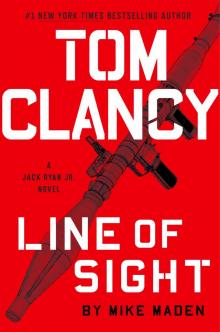 Line of Sight
Line of Sight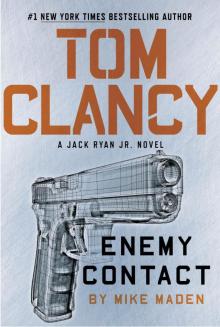 Tom Clancy Enemy Contact - Mike Maden
Tom Clancy Enemy Contact - Mike Maden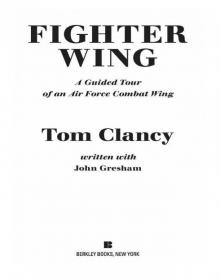 Fighter Wing: A Guided Tour of an Air Force Combat Wing
Fighter Wing: A Guided Tour of an Air Force Combat Wing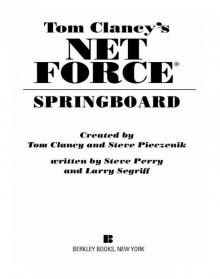 Springboard
Springboard Line of Sight - Mike Maden
Line of Sight - Mike Maden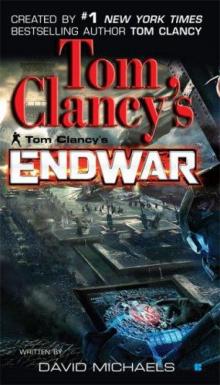 EndWar
EndWar Dead or Alive
Dead or Alive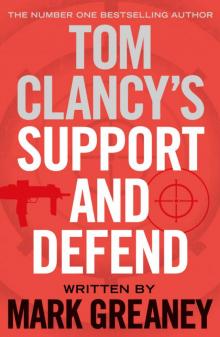 Tom Clancy Support and Defend
Tom Clancy Support and Defend Checkmate
Checkmate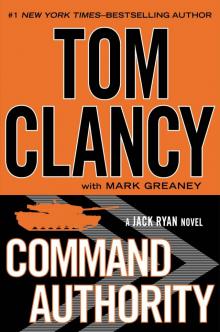 Command Authority
Command Authority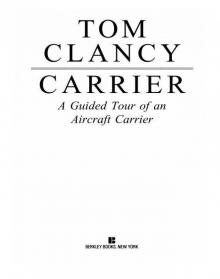 Carrier: A Guided Tour of an Aircraft Carrier
Carrier: A Guided Tour of an Aircraft Carrier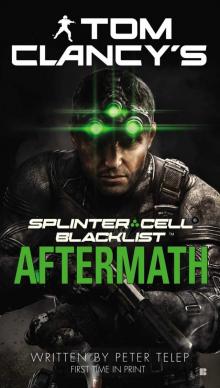 Blacklist Aftermath
Blacklist Aftermath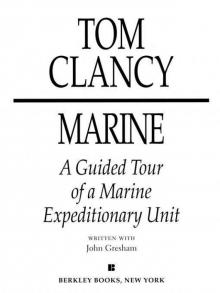 Marine: A Guided Tour of a Marine Expeditionary Unit
Marine: A Guided Tour of a Marine Expeditionary Unit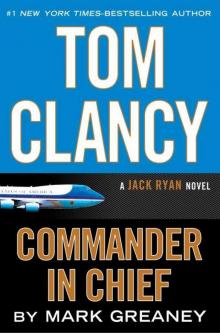 Commander-In-Chief
Commander-In-Chief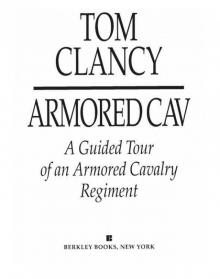 Armored Cav: A Guided Tour of an Armored Cavalry Regiment
Armored Cav: A Guided Tour of an Armored Cavalry Regiment Tom Clancy's Jack Ryan Books 1-6
Tom Clancy's Jack Ryan Books 1-6 The Ultimate Escape
The Ultimate Escape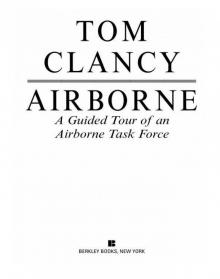 Airborne: A Guided Tour of an Airborne Task Force
Airborne: A Guided Tour of an Airborne Task Force Debt of Honor
Debt of Honor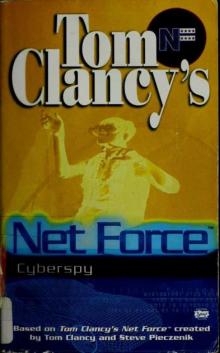 Cyberspy
Cyberspy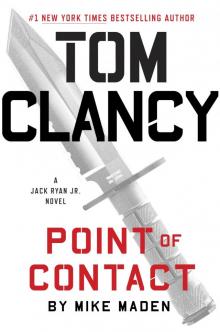 Point of Contact
Point of Contact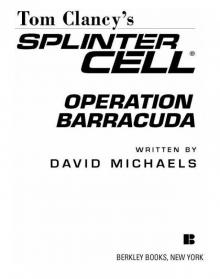 Operation Barracuda (2005)
Operation Barracuda (2005) Choke Point
Choke Point Power and Empire
Power and Empire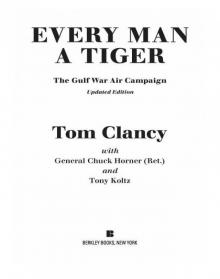 Every Man a Tiger: The Gulf War Air Campaign
Every Man a Tiger: The Gulf War Air Campaign Endgame (1998)
Endgame (1998)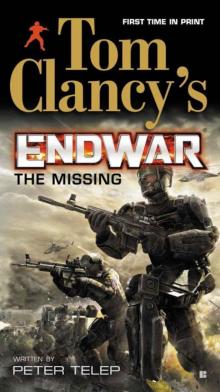 EndWar: The Missing
EndWar: The Missing Splinter Cell (2004)
Splinter Cell (2004)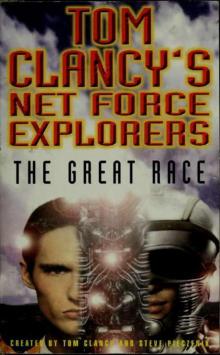 The Great Race
The Great Race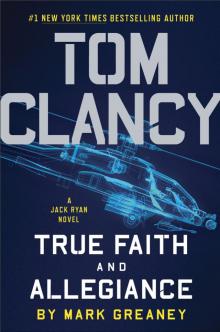 True Faith and Allegiance
True Faith and Allegiance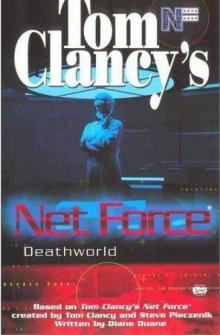 Deathworld
Deathworld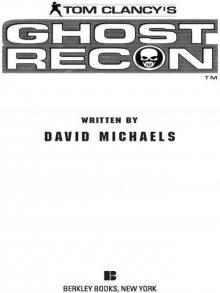 Ghost Recon (2008)
Ghost Recon (2008)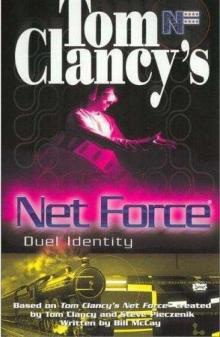 Duel Identity
Duel Identity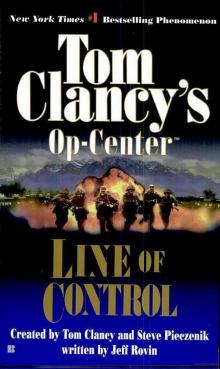 Line of Control o-8
Line of Control o-8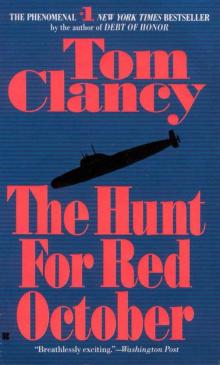 The Hunt for Red October jr-3
The Hunt for Red October jr-3 Hidden Agendas nf-2
Hidden Agendas nf-2 Acts of War oc-4
Acts of War oc-4 Ruthless.Com pp-2
Ruthless.Com pp-2 Night Moves
Night Moves The Hounds of Rome - Mystery of a Fugitive Priest
The Hounds of Rome - Mystery of a Fugitive Priest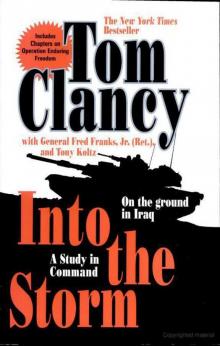 Into the Storm: On the Ground in Iraq sic-1
Into the Storm: On the Ground in Iraq sic-1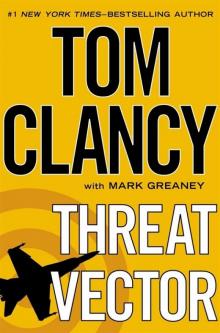 Threat Vector jrj-4
Threat Vector jrj-4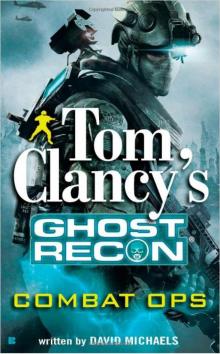 Combat Ops gr-2
Combat Ops gr-2 Virtual Vandals nfe-1
Virtual Vandals nfe-1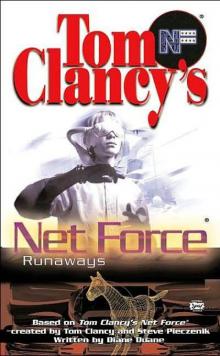 Runaways nfe-16
Runaways nfe-16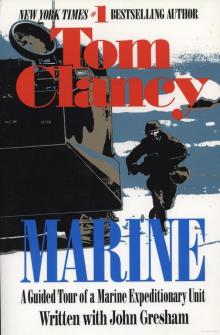 Marine: A Guided Tour of a Marine Expeditionary Unit tcml-4
Marine: A Guided Tour of a Marine Expeditionary Unit tcml-4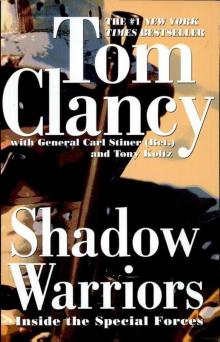 Shadow Warriors: Inside the Special Forces sic-3
Shadow Warriors: Inside the Special Forces sic-3 Jack Ryan Books 1-6
Jack Ryan Books 1-6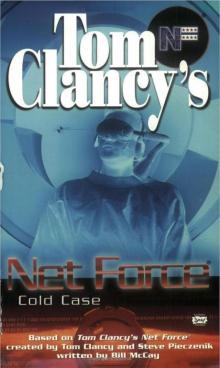 Cold Case nfe-15
Cold Case nfe-15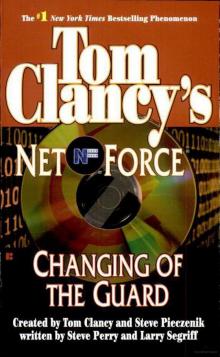 Changing of the Guard nf-8
Changing of the Guard nf-8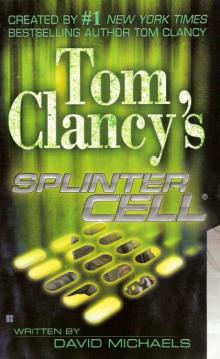 Splinter Cell sc-1
Splinter Cell sc-1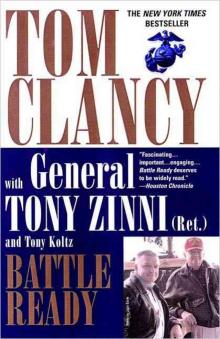 Battle Ready sic-4
Battle Ready sic-4 The Bear and the Dragon jrao-11
The Bear and the Dragon jrao-11 Fighter Wing: A Guided Tour of an Air Force Combat Wing tcml-3
Fighter Wing: A Guided Tour of an Air Force Combat Wing tcml-3 Patriot Games jr-1
Patriot Games jr-1 Jack Ryan Books 7-12
Jack Ryan Books 7-12 Mission of Honor o-9
Mission of Honor o-9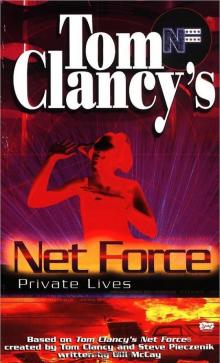 Private Lives nfe-9
Private Lives nfe-9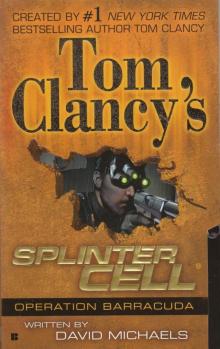 Operation Barracuda sc-2
Operation Barracuda sc-2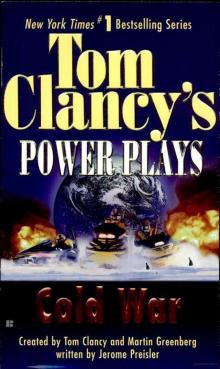 Cold War pp-5
Cold War pp-5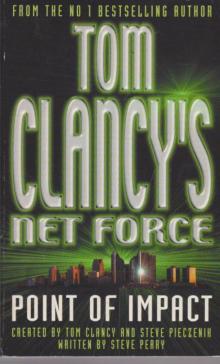 Point of Impact nf-5
Point of Impact nf-5 Red Rabbit jr-9
Red Rabbit jr-9 The Deadliest Game nfe-2
The Deadliest Game nfe-2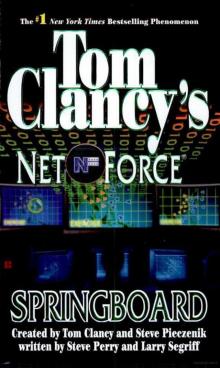 Springboard nf-9
Springboard nf-9 Safe House nfe-10
Safe House nfe-10 EndWar e-1
EndWar e-1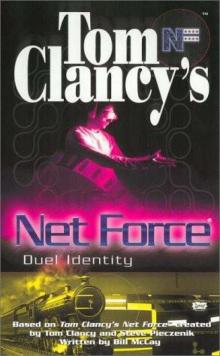 Duel Identity nfe-12
Duel Identity nfe-12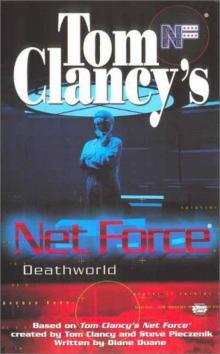 Deathworld nfe-13
Deathworld nfe-13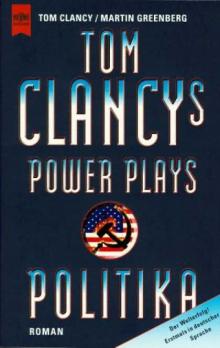 Politika pp-1
Politika pp-1 Rainbow Six jr-9
Rainbow Six jr-9 Tom Clancy's Power Plays 1 - 4
Tom Clancy's Power Plays 1 - 4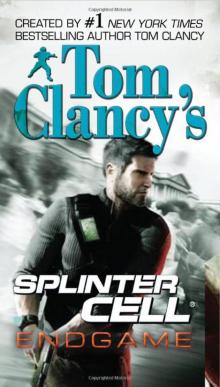 Endgame sc-6
Endgame sc-6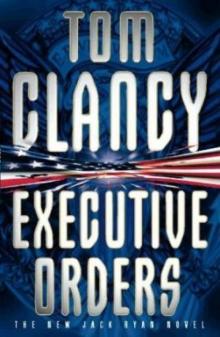 Executive Orders jr-7
Executive Orders jr-7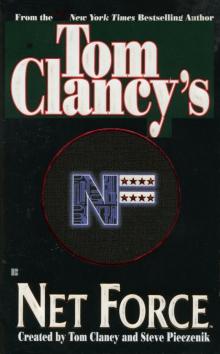 Net Force nf-1
Net Force nf-1 Call to Treason o-11
Call to Treason o-11 Locked On jrj-3
Locked On jrj-3 Against All Enemies
Against All Enemies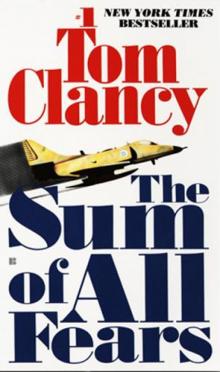 The Sum of All Fears jr-7
The Sum of All Fears jr-7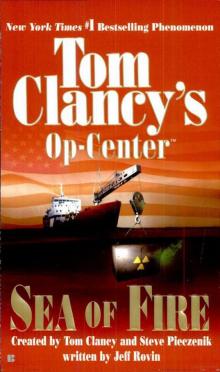 Sea of Fire o-10
Sea of Fire o-10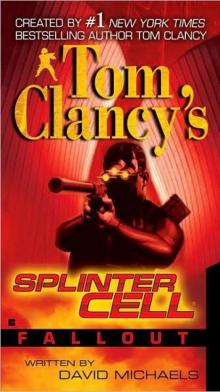 Fallout sc-4
Fallout sc-4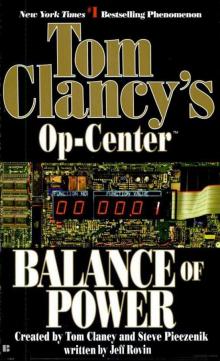 Balance of Power o-5
Balance of Power o-5 Shadow Watch pp-3
Shadow Watch pp-3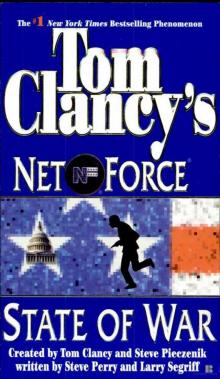 State of War nf-7
State of War nf-7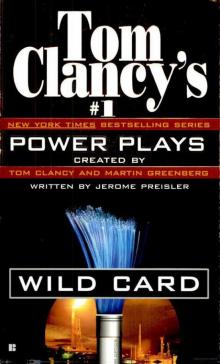 Wild Card pp-8
Wild Card pp-8 Games of State o-3
Games of State o-3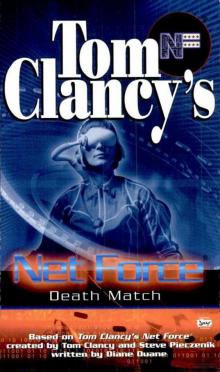 Death Match nfe-18
Death Match nfe-18 Against All Enemies mm-1
Against All Enemies mm-1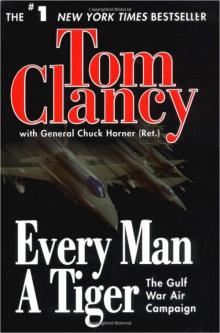 Every Man a Tiger: The Gulf War Air Campaign sic-2
Every Man a Tiger: The Gulf War Air Campaign sic-2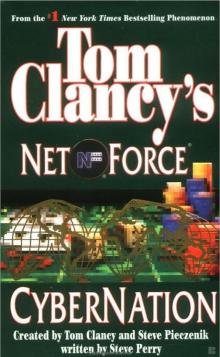 Cybernation nf-6
Cybernation nf-6 Support and Defend
Support and Defend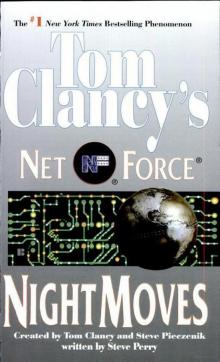 Night Moves nf-3
Night Moves nf-3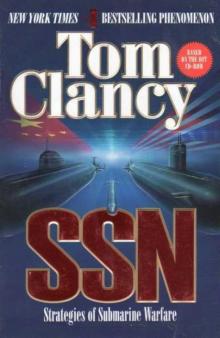 SSN
SSN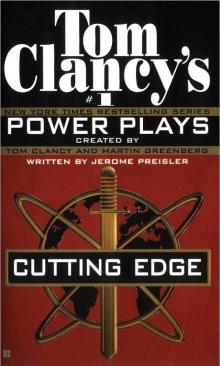 Cutting Edge pp-6
Cutting Edge pp-6 The Cardinal of the Kremlin jrao-5
The Cardinal of the Kremlin jrao-5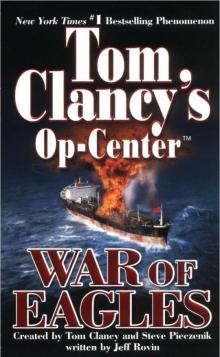 War of Eagles o-12
War of Eagles o-12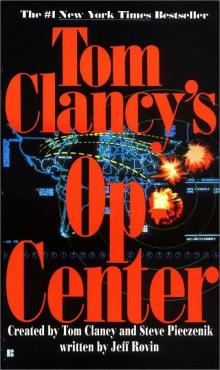 Op-Center o-1
Op-Center o-1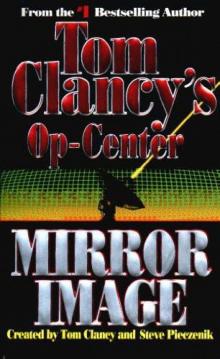 Mirror Image o-2
Mirror Image o-2 The Archimedes Effect nf-10
The Archimedes Effect nf-10 Teeth of the Tiger jrj-1
Teeth of the Tiger jrj-1 Bio-Strike pp-4
Bio-Strike pp-4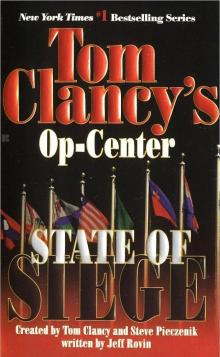 State of Siege o-6
State of Siege o-6 Debt of Honor jr-6
Debt of Honor jr-6 Zero Hour pp-7
Zero Hour pp-7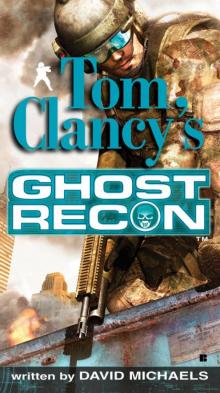 Ghost Recon gr-1
Ghost Recon gr-1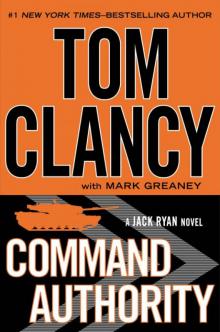 Command Authority jr-10
Command Authority jr-10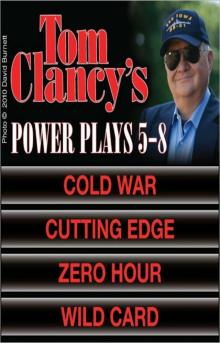 Tom Clancy's Power Plays 5 - 8
Tom Clancy's Power Plays 5 - 8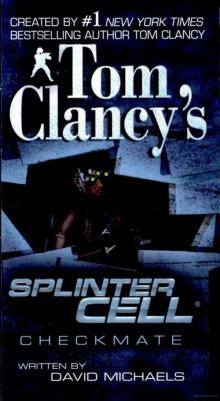 Checkmate sc-3
Checkmate sc-3 Breaking Point nf-4
Breaking Point nf-4 Gameprey nfe-11
Gameprey nfe-11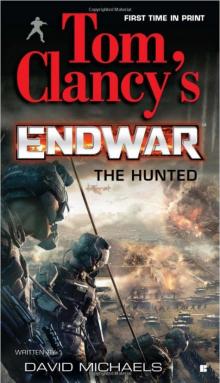 The Hunted e-2
The Hunted e-2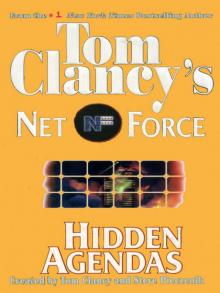 Hidden Agendas
Hidden Agendas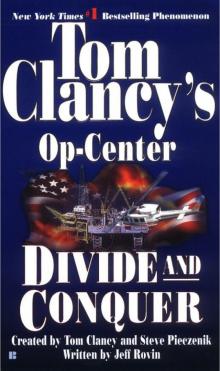 Divide and Conquer o-7
Divide and Conquer o-7